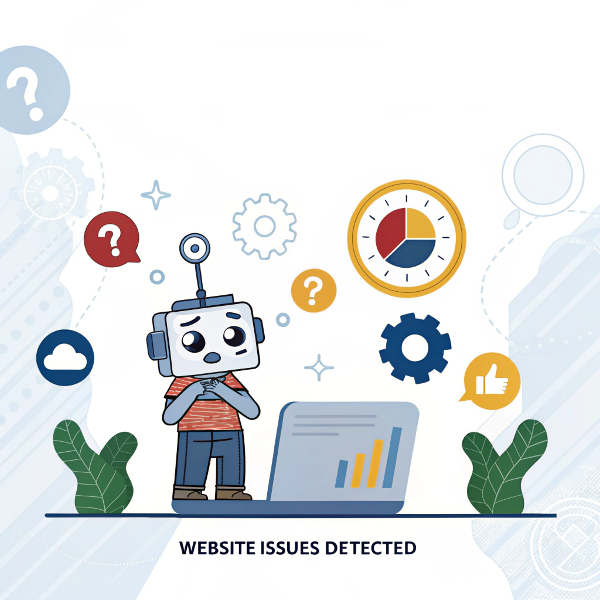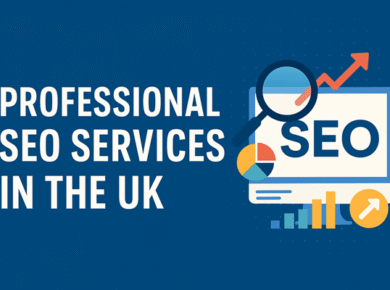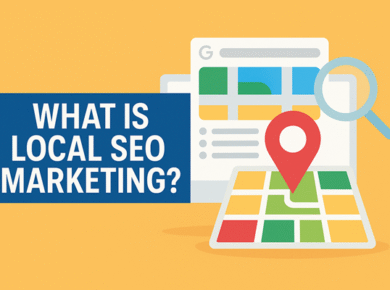Web development is the process of building and maintaining websites and web applications that are accessible via the Internet or an intranet. It involves a range of tasks, including:
- Front-end development: Creating the visual elements of a website that users interact with using languages like HTML, CSS, and JavaScript.
- Back-end development: Building the server-side logic, databases, and application integration that power the website, using languages such as PHP, Python, Ruby, or Java.
- Full-stack development: Combining both front-end and back-end development to create a complete web solution.
- Additional aspects: This can also include web design, performance optimisation, security implementation, and ongoing maintenance to ensure the site remains functional and user-friendly.
The benefits of web development
Global reach
Your website is accessible 24/7, attracting customers worldwide and boosting brand visibility.
User engagement
Responsive, user-friendly design keeps visitors engaged, enhancing navigation and conversion rates.
Cost-effective growth
A professional website serves as an affordable marketing tool that scales with your business and integrates with your digital strategies.
Check out our Other Services

The Process
Our streamlined web development process transforms your vision into a fully functional, high-performing website, from initial planning to ongoing support.
- Planning & research: Define goals, audience, and key requirements.
- Design: Create wireframes and visual layouts for a seamless user experience.
- Development: Code front-end and back-end functionalities.
- Testing: Verify functionality, responsiveness, and performance.
- Deployment: Launch the website for public access.
- Maintenance: Provide ongoing updates and support.
Best practices for website development
Adopting the best practices in website development is crucial for building a secure, efficient, and engaging online experience that drives both user satisfaction and business success.

Responsive, mobile-first design
Ensure your website is optimised for all devices, providing a seamless experience whether it is accessed on a desktop, tablet, or smartphone.

Optimised performance
Focus on fast load times and efficient resource management to enhance user experience and improve search engine rankings.

Robust security and maintenance
Implement strong security protocols and commit to regular updates to protect user data and maintain the website's reliability over time.
Web development mistakes to avoid
Navigating the web development process successfully means steering clear of common mistakes that can compromise your site’s performance, security, and user experience.
- Inadequate planning: Failing to define clear goals and requirements before development begins.
- Neglecting mobile optimisation: Overlooking responsive design can alienate mobile users.
- Poor user experience (UX): Cluttered designs and confusing navigation can deter visitors.
- Ignoring performance optimisation: Slow load times and inefficient coding hurt both user retention and SEO.
- Weak security measures: Skipping robust security protocols increases vulnerability to cyber threats.
- Insufficient testing and maintenance: Not thoroughly testing or planning for updates can lead to functional issues and outdated content.
How algorithm updates effect web development
Google’s algorithm updates can significantly impact website development by influencing how sites are built, optimised, and maintained. Here’s how:
- Mobile-first indexing: Websites must be fully responsive and mobile-friendly to rank well.
- Page experience and core web vitals: Speed, interactivity, and visual stability affect rankings, requiring developers to optimise performance.
- SEO best practices: Updates prioritise high-quality content, clean code, and proper metadata implementation.
- Security standards: Google favours secure (HTTPS) websites and penalises those with vulnerabilities.
- User experience (UX): Intuitive navigation, quick load times, and accessibility improvements become essential for better rankings.
Staying up to date with Google’s changes ensures that websites remain competitive, user-friendly, and visible in search results.
FAQ's
Your content marketing questions answered
What are the 3 types of web development?
The three main types of web development are:
- Front-end development: Focuses on the visual and interactive elements of a website that users see and engage with.
- Back-end development: Handles server-side logic, databases, and application functionality.
- Full-stack development: Combines both front-end and back-end development for a complete web solution.
What platform do you use for website development?
We tailor our approach based on project needs, using:
- You can use WordPress for flexible, content-driven websites.
- Shopify for seamless eCommerce solutions.
- Custom coding (HTML, CSS, JavaScript, PHP, etc.) for fully bespoke, high-performance websites.
Do you incorporate SEO best practices Into website development?
Yes! We build websites with SEO in mind, ensuring clean code, fast loading speeds, mobile optimisation, and proper metadata implementation to enhance search engine rankings.
Do you provide post launch support?
Absolutely! We offer ongoing support, updates, and maintenance to keep your website running smoothly and securely after launch.
Our website development package
What we will do for you
- Website strategy development: Creation of a bespoke web development plan to deliver a high-performing, user-friendly website.
- User experience (UX) design: Design of intuitive, user-centric interfaces with wireframes to ensure seamless navigation and engagement.
- User interface (UI) design: Development of visually appealing, brand-consistent designs, including custom graphics, typography, and colour.
- Responsive web development: Building a fully responsive website using modern frameworks across desktops, tablets, and mobiles.
- Content management system (CMS) integration: Setup of a user-friendly CMS (e.g., WordPress, Drupal) to enable easy content updates.
- SEO foundation setup: Implementation of on-page SEO best practices, including optimised meta tags, headers, and URL structures.
- Performance optimisation: Optimisation of website speed and performance, including image compression, caching, and minimised code.
- Security implementation: Integration of robust security measures, including SSL certificates, secure hosting, and protection against vulnerabilities.
- E-commerce functionality (if applicable): Development of e-commerce features, such as product pages, shopping carts, and payment gateways.
- Accessibility compliance: Meeting WCAG 2.1 standards for accessibility, making it usable for all users, including those with disabilities.
- Analytics and tracking setup: Integration of tools like Google Analytics and Tag Manager to monitor user behaviour, traffic, and conversions.
- Competitor website analysis: Evaluation of competitors’ websites to identify design, functionality, and performance opportunities.
- Custom functionality development: Implementation of bespoke features (e.g., booking systems, interactive forms, or APIs).
- Testing and quality assurance: Comprehensive testing across browsers, devices, and screen sizes to ensure functionality and compatibility.
- Post-launch support: Provision of on-going maintenance, updates, and support to ensure the website remains secure and up-to-date.
- Detailed strategy report: Comprehensive document outlining the web development methodology, with design choices and technical specifications.
What we need from you
- Existing website URL (if applicable): The URL of your current website for analysis or migration purposes.
- Target audience: Details about your target demographic, including preferences and behaviours.
- Business objectives: Specific goals (e.g., increase user engagement, boost online sales, or enhance brand).
- Preferred features or functionality: Any specific features (e.g., e-commerce, booking system) or design preferences.
- Competitor URLs (optional): URLs of competitors’ websites for design and functionality comparison.
- Access details: Access to your hosting provider, domain registrar, CMS (if applicable), and analytics tools.
- Brand guidelines: Information on your brand’s logo, colours, typography, and tone of voice to ensure consistency.
If you don’t have specific objectives, features, or preferences, provide us with your business details, and we’ll conduct tailored research to develop a bespoke web development strategy.
Latest news
Updates on website development
In today’s digital landscape, having a strong online presence
Local SEO (Search Engine Optimisation) marketing is a digital
Content creation is a critical component of digital marketing,
Google’s ever-evolving algorithms significantly influence how content is created,
Pay-Per-Click (PPC) marketing is a powerful tool for driving
Content marketing is one of the most effective strategies
Web development is an essential part of running a
Google’s algorithm updates have long been a source of
Staying ahead of Google’s ever-evolving algorithm updates is a
The mobile app market is booming, with billions of












